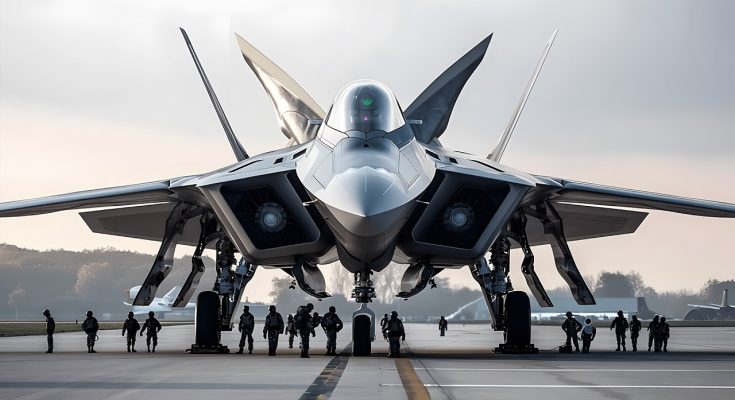It seems you’re referring to an exciting topic! The United States has unveiled its new most advanced fighter jet, and it’s making waves in the aviation world. Here’s a detailed look at the latest game-changer in military aviation: the F-35 Lightning II.
The F-35 Lightning II: A New Era in Fighter Jets
Developed by Lockheed Martin, the F-35 Lightning II is the most advanced multi-role fighter jet ever built. It represents the fifth generation of fighter aircraft, built for versatility, stealth, and advanced technology. The jet is designed to replace a range of older fighters in the U.S. military, including the F-16 Fighting Falcon, F/A-18 Hornet, and others.
Key Features and Capabilities
- Stealth Technology
One of the standout features of the F-35 is its advanced stealth capabilities. The aircraft’s design incorporates radar-absorbing materials and unique shape that reduce its radar cross-section, allowing it to operate undetected in contested environments. This stealth factor makes it a highly effective asset for modern warfare. - Advanced Avionics and Sensors
The F-35’s avionics suite is another major leap forward. Its sensors can detect and track targets from much further away than earlier fighter jets. The jet integrates a system known as sensor fusion, which combines data from multiple sources (radar, infrared sensors, etc.) into a single, unified display. This gives the pilot an unparalleled operational picture, enabling them to make decisions more quickly and accurately. - Multirole Capabilities
The F-35 is a multirole aircraft capable of executing a variety of missions. From air superiority (fighting enemy aircraft) to ground attack, reconnaissance, and even electronic warfare, the F-35 is designed to do it all. Its ability to carry a wide array of advanced weapons internally (to maintain stealth) and externally makes it extremely versatile in combat. - Variants for Different Needs
There are three main versions of the F-35 to cater to different military needs:- F-35A: Conventional takeoff and landing (CTOL), designed for the U.S. Air Force.
- F-35B: Short takeoff and vertical landing (STOVL), designed for the U.S. Marine Corps and capable of operating from shorter runways or amphibious assault ships.
- F-35C: Carrier-based variant designed for U.S. Navy aircraft carriers, with reinforced landing gear and larger wings for better takeoff and landing performance.
- International Collaboration
The F-35 program is a collaborative effort involving multiple countries, including the U.S., the UK, Israel, Japan, and many NATO allies. This cooperation strengthens international defense partnerships and helps create a unified air combat capability.
Challenges and Criticisms
While the F-35 has set a new standard in military aviation, it hasn’t been without challenges. The program has faced:
- Cost Overruns: The development and procurement costs have been significant, with projections putting the total cost of the program at over $1.7 trillion.
- Delays: The F-35 program has seen multiple delays in production and delivery, which have affected its overall readiness.
- Maintenance Issues: Some variants have experienced issues related to software glitches and maintenance, which have led to lower-than-expected operational readiness rates.
Future of the F-35 and Beyond
Looking forward, the U.S. is also working on the Next Generation Air Dominance (NGAD) program, which will further evolve beyond the F-35 to maintain air superiority. However, the F-35 will remain the cornerstone of U.S. military aviation for the foreseeable future, with plans to integrate it into every branch of the U.S. armed forces.
Conclusion
The F-35 Lightning II is more than just a fighter jet; it’s a symbol of the future of aerial combat, combining stealth, versatility, and cutting-edge technology into one platform. As the most advanced fighter jet in the world, it is set to maintain U.S. military dominance in the skies for decades to come.
Would you like to dive deeper into any of the F-35’s specific features or discuss how it compares to older jets?



